×


We have detected your country as:
Please click here to go to the USA website or select another country from the dropdown list.
by: Kathy DeGagne, BFP Staff Writer
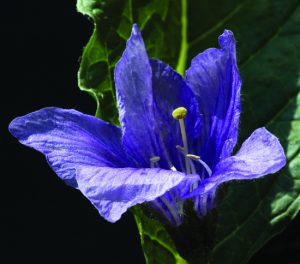
(Manfred Ruckszio/shutterstock.com)
The Holy Land of today is rich with vegetation of every description. Ancient Israel would have looked even more lush. The cedars of Lebanon were famous throughout the known world; Bashan had towering pines and oaks; and the Jordan Valley was treed with date palms. Olives, figs, pomegranates and grapes made the land fruitful. From the more than 125 plants 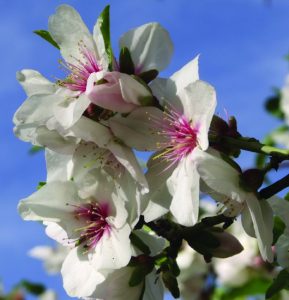 mentioned in Scripture, we’ve picked a few to highlight here.
mentioned in Scripture, we’ve picked a few to highlight here.
Almond: “The word of the Lord came to me: ‘What do you see, Jeremiah?’ ‘I see the branch of an almond tree,’ I replied. The Lord said to me, ‘You have seen correctly, for I am watching to see that my word is fulfilled’” (Jer. 1:11–12 NIV).
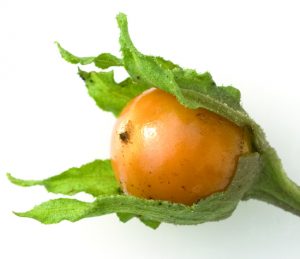
Mandrake blossom and mandrake fruit
The Hebrew word for almond (shaked) is similar to the word for watchful, wakeful or hasten. The almond tree is the first tree to awaken from winter and heralds the coming of spring. Masses of beautiful, pinkish-white blossoms blanket the trees, covering the Israeli landscape in feathery white foliage. The lampstand in the Tabernacle was designed with cups shaped like almond flowers, with almond buds and blossoms on each of the six branches (Exod. 25:33).
Mandrake: “The mandrakes give off a fragrance, and at our gates are pleasant fruits…” (Song of Sol. 7:13)
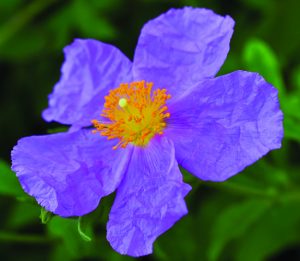
Cistus incanus (Rockrose) (AlessandraRC/shutterstock.com)
The mandrake is commonly found in Israel’s wheat fields. Its wrinkled leaves grow in a rosette pattern with purplish blossoms at its center that eventually produce small tomato-like berries. It has a heavy root system that can look almost human-like. The Hebrew word for mandrake means “love-plants” a purpose alluded to in the story in Genesis 30. The fruit of the mandrake has a perfumed fragrance but it belongs to the nightshade family and is considered poisonous when eaten.
Balm of Gilead: “Is there no balm in Gilead, is there no physician there?” (Jer. 8:22)
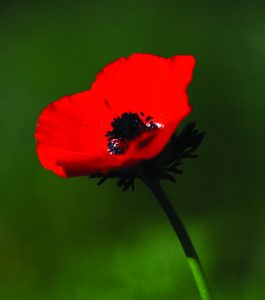
Crown Anemone (Avi Ohayon/Government Press Office)
The region of Gilead in biblical times extended from the Arnon Gorge to Mount Hermon and was renowned as the place where plants were harvested for their medicinal properties. Although the identity of the balm of Gilead is uncertain, the Cistus shrubs may be the most likely possibility. The extract of the Cistus incanus is widely used as a medicine in the Mediterranean region. It produces a resin on its leaves and stems that is an effective balm for skin inflammations. The resin has also been used for centuries as fragrant incense.
Lilies of the Field: “Consider the lilies of the field, how they grow: they neither toil nor spin; and yet I say to you that even Solomon in all his glory was not arrayed like one of these.” (Matt. 6:28–29)
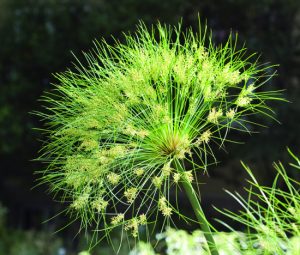
Papyrus (Manfred Ruckszio/shutterstock.com)
Yeshua spoke in images His hearers could understand, so the “lilies of the field” would have had to be familiar flowers to His audience. It could possibly refer to irises or other lily-like flowers that often grow among the grain and bear rich blooms from pinkish purple to deep violet-purple and blue. Another possibility is the crown anemone, the most common wildflower in Israel. With their red blossoms blanketing vast fields in the Upper Negev and the Galilee in springtime, they are truly dressed with the rich splendor of Solomon. Anemones can also bear purple, pink or white flowers. The Hebrew name Kalanit comes from the word for bride kala, and refers to the loveliness of the blooms.
Papyrus: “The papyrus reeds by the River, by the mouth of the River…” (Isa. 19:7)
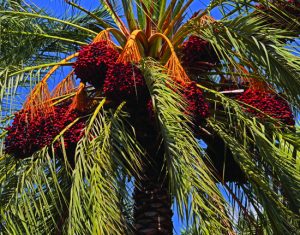
Date Palm (Rick & Grace/KnelsenKollection.com)
Papyrus was once a common wetland plant in Israel, abundant in the Hula Swamp, referred to as the “waters of Merom” in Joshua 11:5. The swamp was drained early in the twentieth century to combat malaria, destroying much of the habitat of the plant. The Hula wetlands are now partially restored and papyrus is again growing there in sizable areas. Papyrus is the origin of the word paper and was used to make paper by pounding the stems together. The stems can tower several meters high, crowned with a mass of flowers and umbrella-like stalks.
Palm Tree: “The righteous shall flourish like a palm tree…” (Ps. 92:12)
With its towering stature crowned with a cap of long green fronds, these trees can survive an arid climate and were often found marking oases such as En Gedi and Jericho. The reforested shores of the Dead Sea now boast abundant palm groves. In Hebrew, the date fruit is called tamar and was used as a girl’s name both in ancient and modern times. Tamar was the name of Judah’s daughter-in-law (Gen. 38) and David’s daughter (2 Sam. 13:1). Date palms were used as an architectural motif on the walls and doors of the Temple (1 Kings 6).
Recently a number of date seeds were uncovered at Masada, dating from 2,000 years ago near the time of the Roman siege. Scientists planted the seeds and one tree sprouted. Dubbed “Methuselah” by its caretakers, botanists are hoping that the tree is from the ancient Judean date palm line that died out when the Jewish people were banished from the Land in AD 70 and there was no one left to care for the trees. Methuselah is a beautiful illustration of God’s redemptive miracle in the land of Israel—new life and restoration after 2,000 years.
All logos and trademarks in this site are property of their respective owner. All other materials are property of Bridges for Peace. Copyright © 2024.
Website Site Design by J-Town Internet Services Ltd. - Based in Jerusalem and Serving the World.